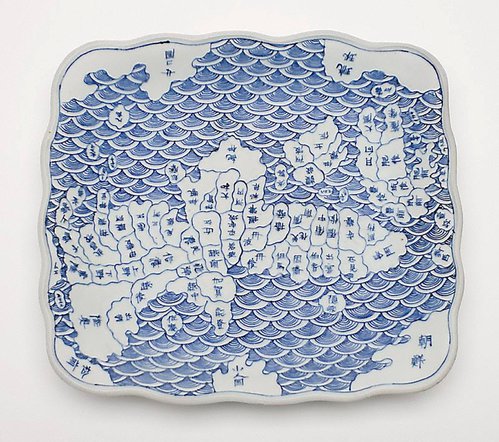Title
Charger with design of phoenix, flowering plants and animals
19th century
Artist
-
Details
- Other Titles
- Imari ware charger
Charger - Alternative title
- Large charger with design of phoenix and flowering plants in the centre and flower and animal pattern around it
- Place where the work was made
-
Arita
→
Japan
- Period
- Edo (Tokugawa) period 1615 - 1868 → Japan
- Date
- 19th century
- Media category
- Ceramic
- Materials used
- porcelain with underglaze blue, overglaze enamel and gilding
- Dimensions
- 8.2 x 59.0 cm
- Signature & date
Not signed. Not dated.
- Credit
- Gift of Professor R. Clough 1985
- Location
- Not on display
- Accession number
- 179.1985
- Copyright
- Artist information
-
Arita ware
Works in the collection
- Share
-
-
About
Although in Japan the term Imari ware designates both blue-and-white and enamel decorated wares, in the West the term has generally referred to porcelains densely decorated in enamels, such as this. In the centre it features a design of phoenix and flowering plants, with a flower and animal pattern around it. The large shallow shape of a charger made it well suited to pictorial decoration. Most dishes were hung on the wall rather than used.
The Asian Collections, AGNSW, 2003, pg.264.
Arita ware or Imari ware?
Arita ware (porcelain made around the Arita region) is commonly referred to as 'Imari ware' both in Japan and overseas because porcelain products from the region were transported to domestic and overseas markets through the port of Imari, approximately 15km north of Arita. For the sake of consistency, all porcelain works produced during the Edo period in the Art Gallery of New South Wales collection are catalogued according to the production site, e.g. Arita ware and Hasami ware.
Imari itself was home to the Nabeshima ware, exclusively produced at the Ôkawachi kilns for official use of the ruling Nabeshima clan. With the establishment of the Meiji government in 1868 the independent fiefs of the Edo period were replaced by prefectures in 1871, and the Ôkawachi kilns entered the free market. The term 'Imari ware' (or Ôkawachi ware) now applies to works produced in Imari from 1871 to the present.
-
Places
Where the work was made
Arita
-
Bibliography
Referenced in 1 publication
-
Jackie Menzies (Editor), The Asian Collections Art Gallery of New South Wales, 'Ceramics', Sydney, 2003, 264 (colour illus.).
-
-
Provenance
Professor Richard Clough, pre 1985, Sydney/New South Wales/Australia, donated by Professor Richard Clough to the Art Gallery of New South Wales 1985.




